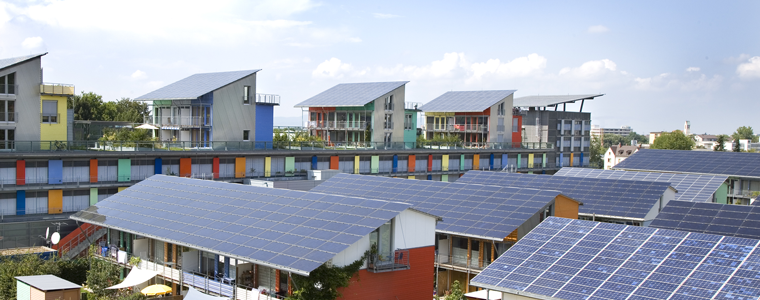The thriving cities of tomorrow will be sustainable cities. To meet the new demands and opportunities of rapid urbanization, climate change and technology, they will need innovative urban services that address challenges such as getting people from home to work safely and efficiently, lighting streets more cost-effectively, or reducing runoff and risk of flooding. Alternative sustainable service solutions and innovations exist today, including transit-oriented development, LED street lighting, pervious surfaces, and capture and reuse strategies. However, these are not widely pursued and rarely scale up because the ecosystem of services and financing does not match.
To make our cities more healthy, prosperous and sustainable, while reducing carbon emissions, we must close the gap between cities’ growing demand for more sustainable urban services and their ability to access innovative solutions and financing options. Otherwise, the choices cities make today based on the current availability of the market-ecosystem to deliver services could lock them into unsustainable paths in the future.
How to accelerate the deployment of sustainable solutions?
City officials will often tell you that they have a portfolio of game-changing, ready-to-be-implemented projects, but that there is no money to finance them. In turn, capital providers will say that money is not an issue, that “there is plenty of money floating around, ready to be invested, but there are no bankable projects to invest in.” The general view is that we need first to build a pipeline of projects, well-structured and so bankable, that will then meet the financing supply. This supply is expected to respond to a demand from bankable projects. We are stuck in a demand-supply approach where it is the responsibility of the other side to solve the mismatch. Clearly, something wrong is happening —or not happening— in the intersection between project sponsors and investors.
Exploring this mismatch issue and ways to overcome the demand-supply deadlock requires looking more carefully at infrastructure service models and considering if there are approaches that may bypass or complement past delivery models. When looking at Amazon replacing retail stores, Spotify replacing music stores, Uber shaking the taxi service, cell phone technology replacing landlines, and wireless routers replacing Local Area Networks and on-site servers, we see that alternative ways to providing better services have been made possible by developing innovative business models.
The advantages of a business model approach
A focus on business model offers key concepts that can be applied to overcome the mismatch issue in infrastructure. Here are four main elements to keep in mind when analyzing alternative business models:
1) The investment components of the projects that need to be made
2) The service delivery mechanism, or the suite of contracts that will structure the implementation, meaning how responsibilities and risks are allocated between stakeholders
3) The funding resources to pay for the investments
4) The financial instruments to mobilize investment capital (to be repaid later)
Looking at business models compels us to invite to the table the three key stakeholders of any investment in urban services: public decision-makers, capital providers and service providers. Together, they can identify the key market bottlenecks, constraints and margins of innovation, and find win-win-win business model solutions for the people, the economy and the environment.
Looking at business models opens the possibility of shifting the traditional roles in service provision. In Rio de Janeiro, as in many other places, an energy service company is taking on the task of upgrading and maintaining public lighting in exchange for a share of the savings generated through a more energy-efficient infrastructure. In the United States, service users are taking on more active roles by opting for residential solar rooftops, enabling them to generate their own power or lease out their roof space to third party companies who operate the infrastructure.
Looking at business models highlights that beyond the financing issue, funding is key for the sustainability of an investment: viable revenue streams or transfers that support services through the cycle of planning, construction, operation, and maintenance. Alternative funding sources exist and are worth exploring, such as unlocking previously untapped willingness-to-pay. For instance, users looking for point-to-point, no-hassle mobility in the sharing economy are paying a fee for mobility services from providers like Uber, Lyft, and a range of bike share operators, rather than paying for ownership of the asset. This ensures a viable revenue stream that will in return secure the fiscal sustainability of an investment (public budget perspective), in addition to the economic sustainability (society perspective) and the financial sustainability (service and capital providers perspective).
Finally, looking at business models helps to articulate financial innovation with required reforms of the legal, fiscal or policy frameworks, by underlining how non-financial measures enable financial solutions to be implemented and therefore make an investment economically, financially and fiscally viable. For example, in many places, bus fleet are procured based on lowest upfront costs rather than lifecycle costs, putting clean buses at a disadvantage against diesel buses.
What is striking at the local level is certainly also true at the national level. I am curious to hear what others think about alternative approaches that have been developed to overcome this mismatch between demand and supply.
Photo: Copyright © Andrewglaser – Wikimedia Commons – (CC BY-SA 3.0)


Leave a Reply